For each year’s graduation ceremony, SFUAD selects one senior to give the class speech. This year’s speaker is soon-to-be Film School graduate Max Marriner.
Hannah Reiter’s Thesis Show
posted by Franco Romero
Senior Graphic Design major Hannah Reiter’s work tends to focus on minimalism and mindfulness.
Comics Students Sell Their Work
posted by Franco Romero
This semester, students who previously completed the introductory comics-making class honed their skills even further in the mastering comics course, taught by Bram Meehan. Now, students will be presenting their finished products to the public by selling their work at Big Adventure Comics shop.
Jesse Eisenberg Uses the Urinal...
posted by Franco Romero
Film Major and senior Alec Brown is wrapping up the finishing touches on his latest short film, “Jesse Eisenberg Uses the Urinal.” Brown sat down with Jackalope Magazine to discuss the project and where he hopes it will end up in the future.
Six
posted by Franco Romero
On the evening of April 29, several graduating seniors in SFUAD’s Photographic Arts Department will be putting on their senior show. Six seniors, to be precise, which is where the show takes its name and concept from.
Ephemera 7
posted by Franco Romero
On the evening of March 25, SFUAD students in the Graphic Design and Digital Arts departments put their work on display for Ephemera 7, the latest in an ongoing series of shows curated by members of the Alexis Collective.
Water Conservation Documentary...
posted by Franco Romero
While taking a field ecology class at Santa Fe Community College several years ago, Film School Junior Johnny Vigil became interested in Santa Fe’s water system. As a part of the class, students took field trips to locations where they would collect samples and make observations. During a field trip to Santa Fe’s reservoir, Vigil said he felt his eyes opened to something he’d never considered. “I guess I always assumed we just had this magic pipe that would pump our water,” Vigil said. “After taking that trip, I saw all of the wildlife. It really changed me. I saw the delicate ecosystem that provides our water.” Vigil said he was especially struck by the realization that the city’s water comes from a natural source. After the trip, he began to take notice of his own daily water usage. He started trying to find new ways to conserve water, such as simply turning off the sink while he brushed his teeth or taking shorter showers. Now, Vigil is at work on a short documentary about Santa Fe’s water usage. In particular, Vigil is attempting to highlight the ways Santa Fe conserves its water. Additionally, he said he hopes to show individuals how they can be conservative in terms of their own personal water usage. “It got me thinking,” Vigil said. “The water in Santa Fe is really precious. Is it sustainable?” The documentary will feature B-roll footage of the reservoir, which Vigil will be obtaining this week. Additionally, Vigil said he hopes to interview city officials in order to learn about the city’s methods of water conservation. “I really just want to inform my peers, my family and our city,” Vigil said. “Maybe I can even make it educational for students in elementary schools,...
Marina Woollven Wins Muse Times Two...
posted by Franco Romero
Muse Times Two is an annual series of poetry readings, which takes place at Collected Works Bookstore. The series includes a contest open to students from Santa Fe’s four local colleges, and a winner is selected from each school. This year, SFUAD’s winner is Creative Writing senior Marina Woollven.
Lost Kiddy Found
posted by Franco Romero
The feature film Lost Kiddy Found follows an amateur investigative journalist as he attempts to uncover the mystery behind a string of kidnappings. The story was born of grief; the production is fueled by SFUAD film students’ dreams and ambitions.
Nathan Smerage’s Solo EP...
posted by Franco Romero
Until recently, CMP senior Nathan Smerage wasn’t sure what releasing his solo music would mean. While writing and recording the songs for his upcoming EP Rain Check, Smerage was surprised to find that his initial vision for the collection was not at all like what he would end up producing. The EP will be released at his senior show in April.
Interim President Maria Puzziferro...
posted by Franco Romero
At small universities, students have the opportunity to make connections, and receive the attention they need. Making this happen is very important to SFUAD’s new interim president, Maria Puzziferro, who wants to put her focus on students and their educational experience.
Saqeef Ali: Behind The Scenes...
posted by Franco Romero
When Contemporary Music Major Saqeef Ali performed for his SFUAD audition, he did so as a singer. However, after taking his first recording techniques class, he began to discover a new passion: one he would never have seen himself enjoying before he came to SFUAD.
Jordan Solis’ Debut Album
posted by Franco Romero
“I want people to take in this album and really listen to it, and have questions about it,” CMP major Jordan Solis says. “I hope they listen to it multiple times but each time get something different out of it. For example, maybe they pick up on some melodic idea that I introduce on one of the songs that they hear again in another.”
The Diversity Initiative
posted by Franco Romero
With a campus as culturally rich as SFUAD’s, some are inclined to think that diversity is not of great concern. It’s a notion with which Dr. Corine Frankland, chair of the Liberal Arts Department, respectfully disagrees. That is why she is spearheading the diversity initiative: an on-campus movement seeking to further diversity and unite students and faculty on related issues. The first step for the initiative will be to create a mission statement. “With a diversity statement, it helps us in what our mission is, our programming, what type of climate we want to create here for our students, and I think, also, there is a piece of recognizing the importance of diversity,” Franklin says. “The big piece [is that] we live in a culture where people are so identified with their differences and their specific identity, and while that is certainly valid…it also can create sort of small special interest groups that get so unipolar on their issue that they can’t see how they are part of a larger group working together.” Contributing faculty member of the Liberal Arts department Ryan Henson shares Frankland’s sentiment: “I think there have been so many different sub-populations created now that are so focused on one aspect of diversity, one aspect of culture, that it robs diversity of perspective and culture has been missed.” Henson is the faculty advisor for the Black Student Union. He looks forward to the prospect of working within the diversity initiative to raise awareness about what culture and diversity actually mean and approaching these concerns from a holistic and humanist standpoint. One of the first events being undertaken by the initiative is this year’s campus celebration of Martin Luther King Day. The event will include musical performances, a reading of King’s ‘I Have a Dream’ speech, and a panel by the Black Student Union that will address the ways in which the issues Martin Luther King worked for are reflective of the Black Lives Matter movement. Henson feels that this sort of presentation is important in the current political climate and in a time when entire groups are ostracized for the actions of a few. Henson went on to describe his feelings about a lack of understanding among people of all groups and the way it hinders culture: “I’ve experienced this a lot working with the Black Student Union. I have students who have come from Houston, which is heavily populated with black individuals and they come here and they’re a very small subset of the overall New Mexico population. They’re like, ‘I don’t know how to deal with this, I don’t know how to talk to anyone, I don’t know how to fit in.’ You have to challenge them to think of other areas that culture exists. You have to say, ‘let’s not look at race, let’s not look at ethnicity, let’s look at your artistic culture.'” Another group that will be working within the diversity initiative is Colors, SFUAD’s LGBTQIA+ group. Sierra Parson, the access services librarian in Fogelson Library and the faculty advisor for Colors, believes that the purpose of a diversity initiative is twofold: first, for involved individuals to expand knowledge and understanding of each other in order to collaborate more effectively; and second, to expand knowledge and understanding of privilege and how the power of privilege operates in particularly destructive ways. Parson believes that this type of active awareness is vital in educational environments; that students are more productive when they feel don’t feel dismissed and uncomfortable. “I guess my main point is that I would like to see a shift institutionally towards anti oppression awareness, and advocacy for students’ diverse needs and ideas, ” Parson says. “As educators and administrators, I think we’re in unique positions of authority to make a positive difference with and towards our students, and if we’re irresponsible with that authority, then we’re doing a great disservice.” Parson...
Holidays in Santa Fe
posted by Franco Romero
Winter break is quickly approaching, but not everyone will be heading home to be with family. While many students juggle planning out their travels with final exams, others will be remaining in Santa Fe due to work obligations or travel costs. Luckily, the city provides an assortment of attractions for students to keep themselves occupied during the holiday season, especially those who are new to Santa Fe and eager to explore.
Lockhart on Horror
posted by Franco Romero
Liam Lockhart, interim associate chairman of The Film School, is teaching his International Horror Cinema class for the third time this spring semester. While the film lineup from previous semesters may change, Lockhart has promised that some of his more “obscure” favorites will be in store: The Devil’s Backbone, Lunacy and Wreck among others. Jackalope Magazine interviewed Lockhart to discuss both the class and his love of horror cinema. Jackalope Magazine: Can you start off by telling us a bit about your attraction to the horror genre? Why teach such a class? Liam Lockhart: I was going to say, you know a lot of people ask me ‘why horror as a topic?’ And I can tell you, for years when I was working in Hollywood, you know cutting stories for people or mixing films for them, invariably you’d get into conversations and they’d say ‘so what’s your favorite genre of films?’ And I would always kind of turn my head, put my hand in front of my mouth, cough and say ‘horror.’ They’d say, ‘what?’ And I would go, ‘horror.’ They’d go, ‘no, I can’t believe you like horror films, you seem much too sophisticated, much too intelligent.’ They obviously didn’t know me. [Laughs]… but for years, I was always in a position where I had to defend my love of horror films. And so when I finally found myself in the position to teach I thought, ‘well, OK, now here’s a chance.’ I thought if nothing else, I can prove to myself that I’m not alone in my love for horror films… This is only the third time now that I’ve offered this class and it’s been full to capacity. This way I know I’m not alone, I know there are other...
Shoot the Stars® Season Four
posted by Franco Romero
Shoot the Stars ® season four has begun at SFUAD. Two screenplays were selected from student submissions, and are now in the process of being turned into films that will feature professional acting talent.
Math at SFUAD
posted by Franco Romero
The introduction of the Bachelor of Business Administration in Art, Entertainment and Media Management program has brought math classes to SFUAD, taught by department Chair Brad Bergsbaken.
Horror Film Faves
posted by Franco Romero
Along with pumpkin carving and dorm decorating, the Halloween tradition of indulging in favored horror films is popular at SFUAD. However, Paranormal Activity and Insidious won’t be found among this student body of artists. The students interviewed at SFUAD revealed an appreciation for classic horror films, and many offered up their own reasons for finding value in movies such as Psycho, Rosemary’s Baby, and The Shining. “I’m not into the mainstream horror films because I just feel like everything is gimmicky,” says Graphic Design major Caleb Ortega. “I think those films serve mainly as an easy adrenaline rush and I’m just not interested in it. The Shining actually fits into a genre of horror that is really thoughtful, it’s really planned out. The horror aspect comes more from the eeriness of detail.” Ortega went on to discuss the visual aspects of the film. He finds its visual intricacy particularly enticing as a visual artist. “All the visuals in this film are done intentionally,” Ortega says. “I don’t think there is a lot in the film that is overlooked. Every detail is planned for the purpose of that shot and the purpose of that shot. As a graphic designer, I feel they were very successful in making the setting authentic but shifting enough elements to throw you off subconsciously.” Ortega’s Graphic Design peer Brandon Schmidt is also a horror fan who has specific tastes within the genre of horror. Schmidt enjoys watching horror films close to Halloween, but feels they will be horrible nine times out of ten. Nonetheless, Schmidt makes an effort to seek out the exception to the rule. He looks for movies that showcase good storytelling and genuine human emotion. This is why he gravitates toward Psycho as a reference point for good horror. “Psycho is special...
Charlotte Martinez Takes Over The Screen
posted by Franco Romero
SFUAD alumni and former Jackalope writer Charlotte Martinez graduated last May with a double major in Film and Creative Writing. After working at The Screen for several years, Martinez has recently taken over as general manager. Martinez sat down with Jackalope magazine this week to talk about her new job, her experience in Jackalope and writing after graduation.
Jackalope Magazine: How exactly did you end up in this position, as General Manager?
Charlotte Martinez: I’ve been working at The Screen since I was, I think a sophomore. And Peter Grendel, who used to be the general manager here, he hired me when I came in to write, I’ll never forget this, I came in to write a review about one of the movies he played here. It was the first time I’d watched a movie here. Obviously I knew of The Screen, being a student here, but I had never actually gone in and watched a movie. So I went in and said, ‘I’m going to write this review,’ and he said, ‘hey, we need people to work here! Would you like to work here?’ (Laughs). So that was what, four years ago? I’ve worked here every year since, and me being the oldest employee, I guess it just made sense for him to ask me to take over management when he went to the Violet Crown, which is what happened. He took over general management.
JM: Will you describe your experience so far, managing The Screen?
CM: I mean, it’s one screen, so unlike let’s say Regal or even Violet Crown that have multiple screens to manage, it’s not terribly difficult. But it’s also not easy because it’s running a business and I’ve never done that before, you know? I mean, I just graduated in May but I knew The Screen really well and I knew how to work it so I think it made sense for me to step in as manager and do what I had been doing essentially. Except, with an office.
JM: How do you think SFUAD and your education here prepared you for this type of position?
Charlotte Martinez stands in front of Main doors of the The Screen. Photo by Jason Stilgebouer.
Charlotte Martinez stands in front of Main doors of the The Screen. Photo by Jason Stilgebouer.
CM: Hmm. I thought out of all the classes I took here, Jackalope was actually the most integrative. I mean, you’re forced to talk to people. Just going to do an interview is huge, and I mean socializing and everything. But I don’t know anything about running a business. Essentially, I’ve been learning all of this as I go, but I think being able to talk to people and being able to write something? I mean, it’s amazing, especially in New Mexico, just to write something really well and really professionally is a huge deal. So now that I know how to do that, I can communicate with everybody or anybody in this industry and make it sound like I know exactly what I’m talking about.
JM: Would you say then that being in Jackalope, and by extension Creative Writing, gives students skills they will use in a career?
CM: Definitely! And film too, don’t get me wrong. I mean this is a movie theater. I know about production, I know how distribution works now. I didn’t know anything about distribution, because I mean, we don’t learn that here. It’s all about making a movie, this is all about showing movies.
JM: What sort of crowd does The Screen attract, and what kinds of films are shown here?
CM: That’s a good question! Ever since I’ve worked here, it’s so funny because our patrons are the senior citizens of Santa Fe. I wouldn’t have guessed that when I first started working here. I’m like, ‘Oh cool, foreign, independent, it’s all very exotic.’ And what I found was the older crowd crowd coming in. I thought, ‘maybe that’s just this year.’ But no, that’s exactly who loves these sort of movies! They’re so fed up with blockbuster stuff. They are, they’re just like, ‘we won’t go to Regal to see another explosion, to see another Marvel movie,’ you know, it’s so predictable. And it makes sense, because that’s sort of our generation’s thing. They need a real quote-unquote ‘movie,’ and they think that’s independent and foreign cinema. Which it is, because they are essentially looking at the basics of film making still, where as blockbuster is more, you know, young person based.
The Screen empty hours before a movie starts. Photo by Jason Stilgebouer.
The Screen’s empty hours before a movie starts. Photo by Jason Stilgebouer.
JM: Modern blockbuster does seem to have a formula to it.
CM: It does! And this is the formula for the seniors. And it works out, because they really like it here.
JM: Do you think they are drawn to it also because it is so small, and the crowds aren’t as big?
CM: Oh, heck yeah. I mean that’s the first thing they say when they come in, they say they love this environment. It’s very homey, it’s very comforting. We know most of the patrons’ names when they come in and they know ours. It feels very small-town.
JM: Do you have a favorite genre out of the films which are shown here?
CM: Good question. I have to confess, I didn’t even realize this until last year. I really like war stories, and actually like reading war stories too. We played a movie called Phoenix here a while ago. German produced and it didn’t take place during a war, it was post-war, but it was still so well-done and I watched it three times just to analyze it. I find myself analyzing more war movies than anything else. I’m not sure that’s a genre, but if you tell me that it’s a war movie, or if it’s under that category, then I’ll watch it.
JM: I would assume you work closely with the film professors. How is the experience of helping them organize classes?
CM: Yeah, that’s true. That’s great too because I get to see my professors! And then if I ever have questions for them, you know. They’re really nice about coming into my office and giving me the answers still. It’s still that student-teacher relationship except it’s not because I’m technically faculty. But I still get to see them every day!
JM: You get to keep learning from them, even though you are no longer a student?
CM: Exactly. I wish I could have some sort of setup like that with Creative Writing as well.
JM: Is there anything in particular you missed about Creative Writing? Tell me about your time in the program.
SFUAD’s on campus movie theatre. Photo by Jason Stilgebouer.
SFUAD’s on campus movie theatre. Photo by Jason Stilgebouer.
CM: I always loved it. I think the staff was really consistent while I was there. I had Dana [Levin] a couple times and Matt [Donovan] I had a couple times, Julia [Goldberg] I had almost every year. I think that connection and the fact that this is such a small school made the writing department amazing. The professors got to know your work so they were really pressing down on it, where as any other university, they would probably be like, who are you again?
JM: You had a double major in Creative Writing and Film. Why both? Did you lean more toward one or the other while you were in school here?
CM: I went here first when it was the College of Santa Fe. I was always interested in the arts but I liked creative writing a lot more at that point. But then creative writing was this thing where you probably didn’t have a career afterwards and that scared me and it scared my family, so we said, ‘OK, what can we do to make sure you have an income?’ I said, ‘oh, I’ve always been interested in visual. In film making.’ So when the school re-opened I asked, ‘would it be impossible to do a double major?’ And they said ‘well, no. We’ve only had one other person and they didn’t finish, but give it a try.’ So I signed up right away my freshman year, taking both the creative writing and then the film classes. Both of which I really enjoyed by the way, but creative writing was my first love.
JM: You were mostly writing fiction, correct?
CM: I was only writing fiction until Julia Goldberg was like, ‘come join Jackalope!’ I miss it.
JM: Did you do screen writing as well?
CM: Well the curriculum here is that you try it all first, then maybe your junior or senior year you start to narrow in on what you’re interested in. I started off learning production, pre-production, post-production. You do the camera, you do script writing, you do everything, but I did enjoy screen writing more than anything. So yeah, it worked out pretty nicely!
JM: I enjoyed your piece that won for Glyph last year. Is the rest of your work similar?
CM: Yeah, I guess so. During my senior year, I really started exploring the story of my roots. The southwest and being Hispanic or being Native. It’s funny that you bring that up because my last year was really cultural-based, and I didn’t mean for it to be but it sort of turned out that way.
JM: Are you still writing?
CM: The last thing I wrote was a feature for The Reporter on small businesses and that was really fun, but I can’t be working for the Reporter if this is a daily job. But you know, I’m still writing for myself. I say, ‘one of these days this novel will be published. Obviously this short story will go somewhere.’
JM: I would imagine it’s nice to still be in a place of creativity, even if you don’t have as much time for your work.
CM: Totally! I thought it would be weird to stick around the university, because I was here for five years. It took five years to complete two degrees. So, it seems like I’ve been here forever but being just in The Screen and being stressed out about things happening in the film industry, it doesn’t feel like the same school to me. There’s just so many different tasks now, and I’m talking to grown-ups, which is weird and I’m being treated as a grown up rather than a student, not that that’s bad or anything. It’s just different.
JM: How is the experience of being here as a faculty member different from that of being a student?
CM: I think both are very stressful. Both have kept me very busy thus far, but working a business and being the only person in charge here? I mean, I have people that I report to, but there’s nobody overlooking The Screen besides me and I just graduated. I think anybody else would be like, ‘what are they thinking?’ But it’s not. I mean it’s a lot of responsibility and a lot of pressure at some point, but so far I’ve just been able to talk to anybody and everybody about it. They’ll help me. Or, they’ll have someone to send me to to answer questions. It is kind of like being a student in that way. You’re not alone no matter what, you know? Whether you’re a student, if you’re a teacher, if you’re running a business, people are willing to help. I think that’s a Santa Fe thing. I’m convinced that’s a Santa Fe thing.

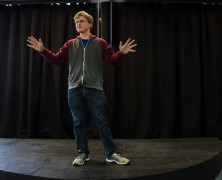
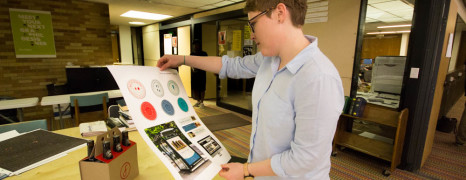
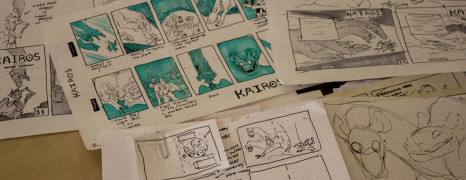
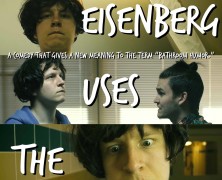
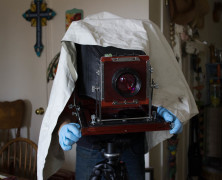
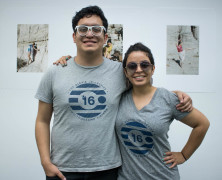

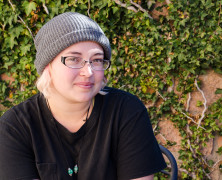
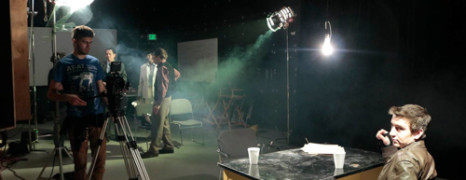

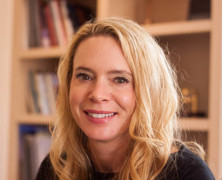




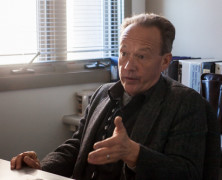
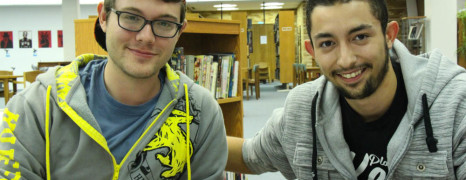
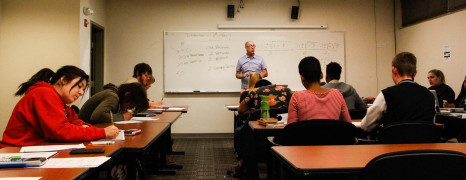
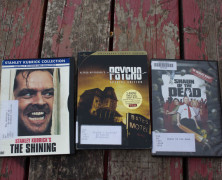

 Jackalope Magazine is the student magazine of Santa Fe University of Art and Design. Building on the interdisciplinary nature of our education, we aim to showcase the talent of our university and character of our city.
Jackalope Magazine is the student magazine of Santa Fe University of Art and Design. Building on the interdisciplinary nature of our education, we aim to showcase the talent of our university and character of our city.
Recent Comments